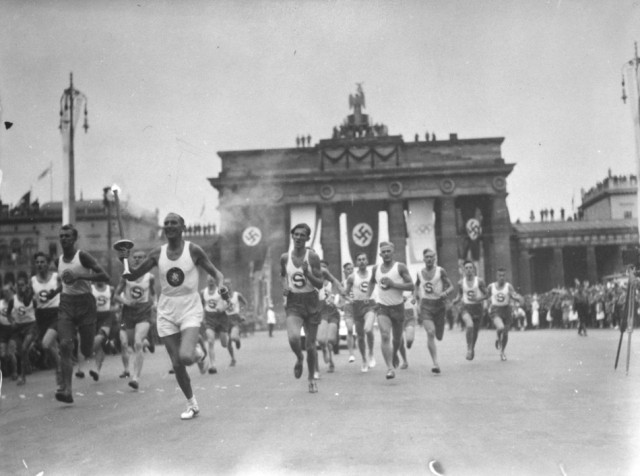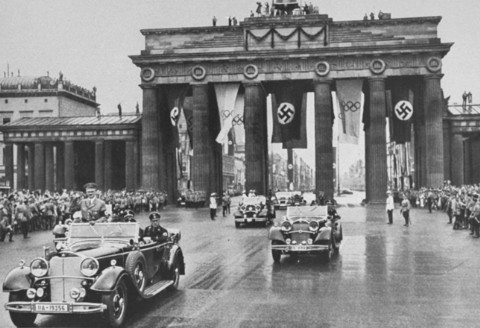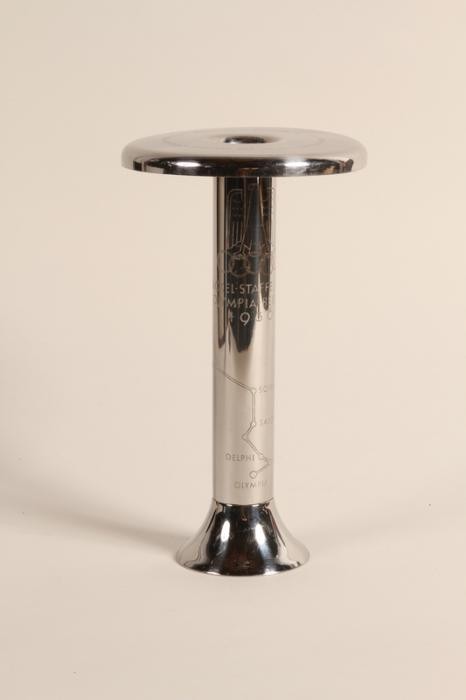
The Nazi Olympics Berlin 1936: Inauguration of the Olympic Torch Relay
Background

On May 13, 1931, the International Olympic Committee awarded the 1936 Summer Olympics to Berlin. Count Henri Baillet-Latour of Belgium headed the committe. The choice of Berlin signaled Germany's return to the world community after defeat in World War I.
Two years later, Nazi Party leader Adolf Hitler became chancellor of Germany. He quickly turned the nation's fragile democracy into a one-party dictatorship. Police rounded up thousands of political opponents, detaining them without trial in concentration camps. The Nazi regime also put into practice racial policies that aimed to "purify" and strengthen the Germanic "Aryan" population. A relentless campaign began to exclude Germany’s one-half million Jews from all aspects of German life.
August 1936
For two weeks in August 1936, Adolf Hitler's Nazi dictatorship camouflaged its racist, militaristic character while hosting the Summer Olympics. Softpedaling its antisemitic agenda and plans for territorial expansion, the regime exploited the Games to bedazzle many foreign spectators and journalists with an image of a peaceful, tolerant Germany.
Germany skillfully promoted the Olympics with colorful posters and magazine spreads. Athletic imagery drew a link between Nazi Germany and ancient Greece. These portrayals symbolized the Nazi racial myth that superior German civilization was the rightful heir of an "Aryan" culture of classical antiquity.
Concerted propaganda efforts continued well after the Olympics with the international release in 1938 of "Olympia," Leni Riefenstahl's controversial film documentary of the Games.

Opening of the Games
On August 1, 1936, Hitler opened the Games of the 11th Olympiad. Musical fanfares directed by the famous composer Richard Strauss announced the dictator's arrival to the largely German crowd. Hundreds of athletes in opening day regalia marched into the stadium, team by team in alphabetical order. Inaugurating a new Olympic ritual, a lone runner arrived bearing a torch carried by relay from the site of the ancient Games in Olympia, Greece.
The Torch Relay
The 1936 Games were the first to employ the torch run. Each of 3,422 torch bearers ran one kilometer (0.6 miles) along the route of the torch relay from the site of the ancient Olympics in Olympia, Greece, to Berlin. Former German Olympian Carl Diem modeled the relay after one that had been run in Athens in 80 B.C. It perfectly suited Nazi propagandists, who used torchlit parades and rallies to attract Germans, especially youth, to the Nazi movement.
The torch itself was made in 1936 by Krupp, a German company better known for its production of steel and armaments.

